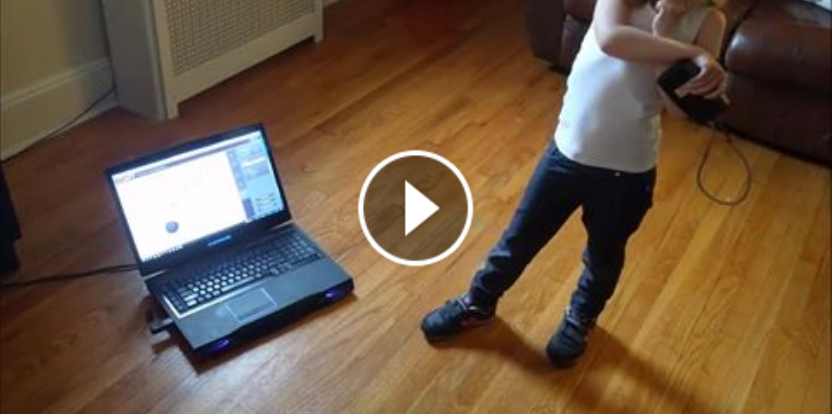Super Excited today. Lorelei and I figured out how to reliably get a signal from her arm to control the robotic prosthetic! (Disclaimer the video and lighting is poor but I was just excited to quickly show you all).
Background: Up until now we have been struggling to get an accurate signal from her arm to control the robotics. We are looking for the signal that is being sent from Loreleis brain to her arm, but because of the motor neuron damage, the signal is really weak. The sensors we used until now essentially filtered and normalized the raw signal so that it can isolate spikes within the signal. When a spike reaches a given amplitude (threshold) we would trigger the robotic actuator to move the prosthetic arm, thereby helping lorelei move it. However, given the weakness of my daughters signal in her muscles, we had to set the threshold really low which in turn caused the robotic actuator to be triggered by signals from her heart or other muscles in her arm or body. Using this traditional approach resulted in a significant roadblock to our project.
I was thinking that there must be a better way... Thinking of approaches that are used within things like image and voice recognition, we can train algorithms to recognize objects in pictures (this is how Google can tell you what is in your photos) or how we train algorithms to recognize speech (Like Siri and Google Now). In both these examples they train the algorithms with vast amounts of data, they do not filter the data or normalize it. What if we did the same with Lorelei's signals, could we not use a similar machine learning technique to look at the unfiltered, full signal that Lorelei's arm produces and have an algorithm learn to recognize the hidden signals within that noise.
It turns out there is a company CoApt who are doing something really similar. After a few emails and a call, they kindly sent us an evaluation unit. After placing 17 sensors on her arm and a bit of calibration we got it to work. We were able to control a virtual arm you can see in the video. This is so amazing! Really amazing stuff CoApt, thank you!
 Bodo Hoenen
Bodo Hoenen
Discussions
Become a Hackaday.io Member
Create an account to leave a comment. Already have an account? Log In.